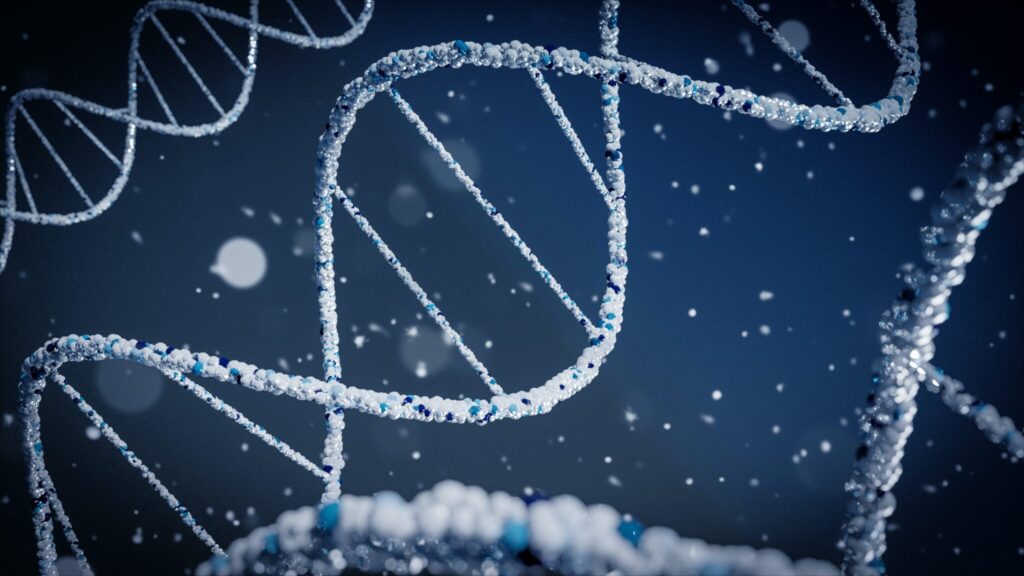Saanvi Nayar recommends "Foodie Pharmacology" for its insightful discussion of the cookbook "Plantology," on how adopting a plant-based diet can revolutionize our health and tackle chronic diseases, proving that food truly is medicine
By: Lexi Rosmarin

Genes decide our eye color, height, genetic predisposition to diseases, and more. We all have a specific, unique mix of all of the genes that exist in the world. The difference between you and me could be one or two genes. We share a percentage of our genes with anything from bananas to chimpanzees. That is to say, our genes play an important role in our traits as humans and as individuals. But, to what extent do our genes decide who we are and who we are going to be? If genetics play as large a role as major scientists say they do, can gene editing and designing your own baby be ethical? Society today has curated a culture where the concept of gene editing and its implications can be seen as a path towards eugenics rather than a path toward better science.
The Human Genome Project is a global project completed in 2003 whose goal was to map the entire human genome, every single base pair sequence. To put this into perspective, base pairs are what make up each unique strand of DNA and RNA and there are over 3 billion of these completely unique base pairs in the human genome. This project took over 10 years and was successful in mapping the entire human genome and every single base pair sequence. Scientists now have information about every gene that has ever existed in a human. New technology and data analysis tools are still being created today to determine everything can be done with this knowledge both scientifically and medically.[1]
While there were originally no outstanding goals related to disease diagnosis or prevention, these are obvious implications of the project that have an ethical undertone. While knowing every gene sequence in the human genome may be helpful in leading to technology that improves people’s lives, it also gives more power to genetic determinism – the belief that our genes determine our destiny and there is nothing we can do to change it.[2]
One example of these ethical implications of the human genome project is that it gives scientists the ability to diagnose people early with genetic diseases, such as Huntington’s diseases, which is 100% guaranteed if a person has the gene for it. Huntington’s disease causes nerve degeneration and there are no therapeutic measures to ease the pain it causes. Knowing that you will be diagnosed with a deadly disease like this in 10 or 15 years is emotionally detrimental and does not necessarily improve a person’s life. Additionally, this gives people the idea that their identity is the disease that they will get. If they know they will eventually acquire this disease and die from it, this will affect their lifestyle and daily choices in a major way.[3]
Another possibly more harmful example of ethical implications of the human genome project is that it led to the creation of technology that can predict susceptibility factors to diseases that are not completely genetic, such as diabetes, Alzheimer’s, bipolar disorder, and autoimmune diseases, among others. The thought is that since these diseases are not entirely genetic, people may be willing to change their behaviors in order to work against their genetic predisposition to acquiring these diseases later in life. However, these tests are not truly predictive, they just provide information about risk. Since many diseases are often dictated by environmental and social factors rather than genetics, there is no way to truly predict if someone will acquire one of these diseases.[4] This further leads to genetic determinism through explaining the differences between one person and another through their genes and genetic predispositions.[5]

Genetic editing is a novel technology that gives people the power to remove, add, or alter existing genes in order to cure or prevent certain diseases. CRISPR-Cas9, also known as CRISPR, is the name of the major gene editing technology today that has both the ability to treat disease and also the ability to remove disease causing genes from the human genome. While this may sound innovative – eliminating deadly diseases for people in the future – there are extreme scientific, evolutionary, social, and ethical implications to consider (and this is why CRISPR-Cas9 will not be available for medical use for a long time, if ever).[6]
People with genetic disabilities are often targets of the CRISPR gene removing technology and are typically negatively affected. While an able-bodied person may undeniably think cutting out this genetic predisposition from the gene pool will be better for future populations, it is effectively communicating to people currently living with the disease that their lives “are not worth living as they are”. The underlying message of this technology communicates that some people are genetically inferior, that people are defined by their genes, and that there exists positive and negative genes. Besides altering natural evolution, CRISPR technology has the potential to propagate the belief that our genes determine who we are and hurt more people than it could possibly help.[7]
Designer babies, or choosing traits for one’s unborn child through In-Vitro Fertilization (IVF), is an unsurprising outcome of new gene editing technology. IVF is the process of a physician manually fertilizing an egg with sperm in a lab to create an embryo. This embryo is then implanted into the uterus of the person carrying the child.[8] People want to use this advanced technology to do anything from removing a genetic predisposition for a disease to choosing eye color or hair color for their child. In IVF, if one or both of the parents has genetic predisposition to diseases like cystic fibrosis or sickle cell anemia, the physician performing IVF has the ability to select embryos that do not carry these genes. In matters not related to health, parents may want to choose the gender and traits of their child. While this may seem less serious than the health concerns, they both come down to the same basic ethical conundrum: does gene editing do more harm or more good to the overall population?[9]

Genome editing, erasing diseases and genetic predispositions, choosing the athleticism gene for your child – these aspects of genetic editing lead to ideas similar to eugenics. Eugenics is the process of “breeding” a population to only have desirable traits be passed on.[10] There is a thin line that gene editing and designer babies must walk before it becomes eugenics. If scientists try to control human heredity through elimination of diseases, disabilities, and even through disrupting natural order through choosing sex and other traits, some part of the answer to why people want to do these things is to improve the population and eliminate “bad” genes. The world has a long history of eugenics misreported as science or clinical trials and it is important that gene editing technology does not follow that path.[11]
All of these outcomes of gene editing technology comes back to the emphasis we as a society place on genes. If the dominant belief is that our genes determine us from the time we are an embryo to the minute we die, then this may contribute to modern eugenic-like thinking and at the very least, defining someone based on if society deems they have “good” or “bad” genes.[12] Having the technology for gene editing and extensive knowledge about the human genome provides scientists and society at large with an important choice and a turning point in ethical scientific practice.
References:
[1] Human genome project timeline of events. (n.d.). Genome.gov. Retrieved November 8, 2021, from https://www.genome.gov/human-genome-project/Timeline-of-Events. [2] Lewontin, R.C. (1991). Biology as Ideology: The Doctrine of DNA. HarperCollins Publishers. [3] Epstein, Charles J. (2000). “Some Ethical Implications of the Human Genome Project”. Nature, 2(3), 193-197. https://www.nature.com/articles/gim2000245.pdf?origin=ppub [4] Epstein, Charles J. (2000). “Some Ethical Implications of the Human Genome Project”. Nature, 2(3), 193-197. https://www.nature.com/articles/gim2000245.pdf?origin=ppub[5] Lewontin, R.C. (1991). Biology as Ideology: The Doctrine of DNA. HarperCollins Publishers.
[6] Sufian, S. (2021, February 16). The Dark Side of CRISPR. Scientific American. Retrieved November 8, 2021, from https://www.scientificamerican.com/article/the-dark-side-of-crispr/. [7] Sufian, S. (2021, February 16). The Dark Side of CRISPR. Scientific American. Retrieved November 8, 2021, from https://www.scientificamerican.com/article/the-dark-side-of-crispr/. [8] In Vitro Fertilization. (2021). Mayo Clinic. Retrieved November 17, 2021. https://www.mayoclinic.org/tests-procedures/in-vitro-fertilization/about/pac-20384716 [9] Ly, S. (2011). The Embryo Project Encyclopedia. Ethics of Designer Babies | The Embryo Project Encyclopedia. Retrieved November 8, 2021, from https://embryo.asu.edu/pages/ethics-designer-babies. [10] History.com Editors. (2017, November 15). Eugenics. History.com. Retrieved November 8, 2021, from https://www.history.com/topics/germany/eugenics#:~:text=Eugenics%20is%20the%20practice%20or,characteristics%20from%20the%20human%20population. [11] Friedmann, T. (2019). “Genetic therapies, human genetic enhancement, and … eugenics?”. Gene Therapy, 26, 351—353. https://doi.org/10.1038/s41434-019-0088-1 [12] Lewontin, R.C. (1991). Biology as Ideology: The Doctrine of DNA. HarperCollins Publishers.
